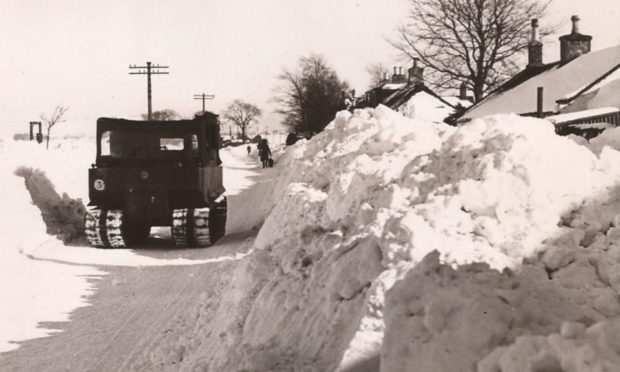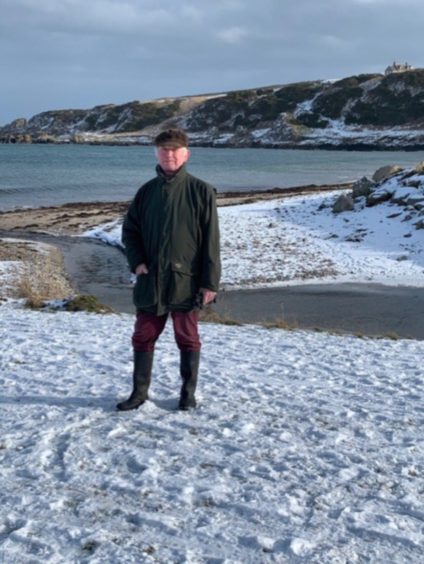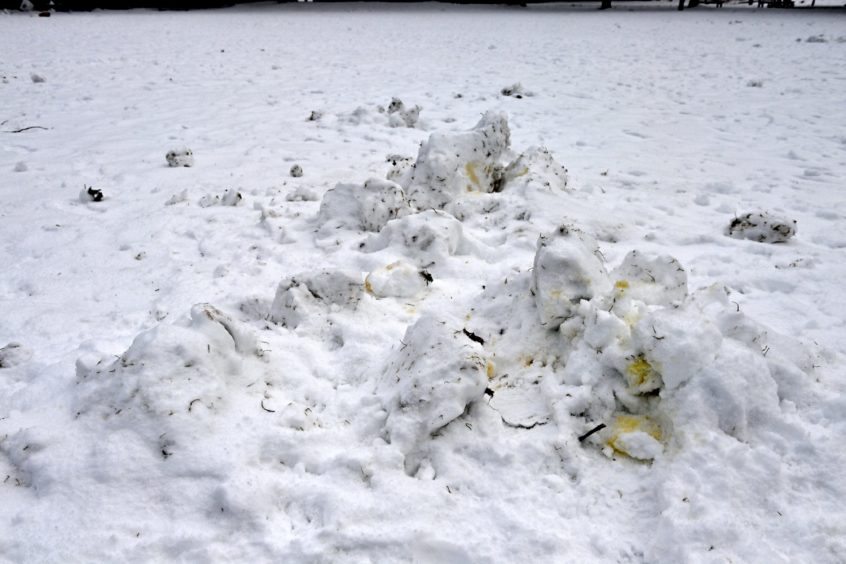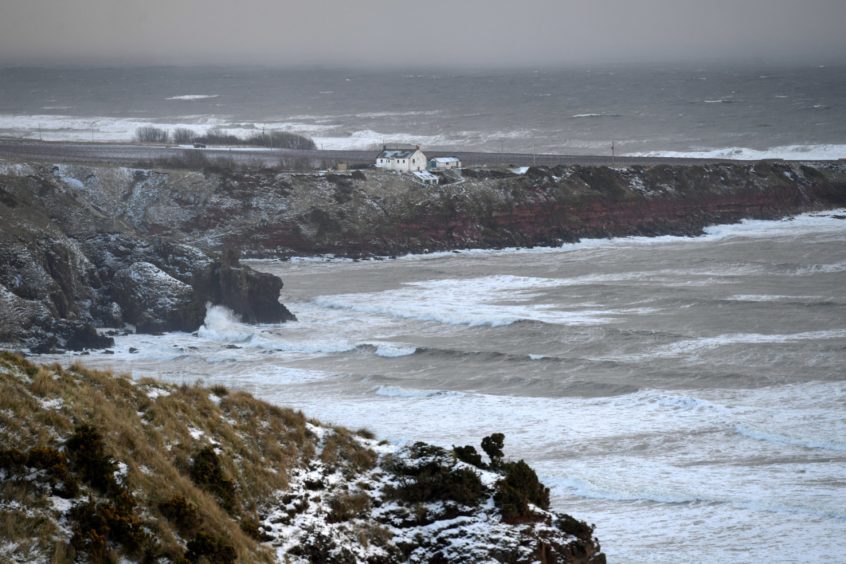John Strachan has never forgotten the months of heavy snow and blizzards which engulfed Aberdeenshire while he was growing up in the 1940s.
The Newmachar man might have spent 30 years with the CID in London after studying at Robert Gordon’s College in Aberdeen, but his memories remain vivid of the prolonged impact of that winter almost 75 years ago.
And he has contacted the Press and Journal to share some of his experiences, which included spending more than three months off school because of the weather.
He recalled: “In 1947, I was eight and a half years old, an age where memories are really vivid, particularly when we were off school at Newmachar for 13 weeks which is quite a chunk of missed learning.
“The long absence was because the back road from Hillhead to Newmachar was totally blocked with snow to a height level with the top of the dykes on either side of the roadway.”
Food deliveries became a logistical exercise
“There are a number of implications of being totally cut off from the outside world. Primarily the need for food supplies. Living on a farm has certain advantages in that regard. For example, there’s the availability of potatoes, turnips, butter, cheese oatcakes and the occasional chicken.
“More complicated foodstuffs were usually delivered by the Co-op van which, once a week, did the rounds of the more remote farms.
“Parallel to the back road, the main turnpike road between Dyce and Oldmeldrum was kept open by regular snowploughs.
“Telephoned, shopping orders from the Co-op were left in boxes at Rosehall Farm on the turnpike. To collect the supplies required travelling through two parks to Buckie Farm and along the track to Rosehall.
“Rustic ingenuity came into play and a large sled was constructed with two sleepers as runners held in place by substantial cross members were bolted in place and the body of a horse cart was fixed on top.
The winter of 1947 was the worst in almost 50 years across Britain.
Almost every part of the country, including areas with little knowledge of how to deal with harsh white-out conditions, were affected by the severity of the snow and ice.
Mr Strachan and his family benefited from being accustomed to a rugged life in the countryside – and they were assisted by some formidable beasts in the blizzards.
He recalled: “What remains vivid is the thrill of being pulled by two Clydesdale [horses] in a snow sledge [in conditions] which were possibly similar to the Austrian Alps.
“The snow was so deep and compacted that the horses and sled passed over the stone dyke at the bottom of the first field. In this way, the full supplies were retrieved.
There were no mod cons in these days
“It was not until 1950 that we had running water and electricity installed in the farmhouse. The water came from a cast iron pump in the scullery and when the outside pipes became frozen we resorted to filling the huge pot with snow which was hung from the sway over the peat fire.
“A further problem was the continued feeding of livestock, two byres of cattle and five horses in the stable. The long byre housed three hand-milked cows, with calves and young stirks. Their diet consisted of neeps, hay and straw.
“The second byre housed the ‘store’ cattle with a similar diet, supplemented with bruised corn (oats) to fatten them for the butcher.”
Creating a snow plough was another challenge
The youngster and his family had to be ingenious in devising different ways of getting on with their lives despite the Arctic temperatures.
Mr Strachan said: “Neeps and tatties were stored overnight in pits with a base of some eight feet, covered in a layer of straw and by about 18 inches of earth.
“However, problems arose when the supply was exhausted. There was no other option for us but to pull the neeps from the frozen fields.
“With the depth of frozen snow on the parks, that was an impossible task so the next invention was to fashion a snow plough.
“Two railway sleepers were chamfered and bolted together at the front and fixed with stout cross planks and then weighed down by large stones or boulders.
“The snow plough was pulled by two horses and the plough parted the snow and managed to dislodge the neeps. It was still a frosty job, but at least you could see the neeps and the beasts could be fed.”
Everything was affected including the trains
Transport networks were stretched to the limit in 1947 and there were occasions where only old-fashioned techniques could prevent trains being stuck in the snow.
This nearly happened on several occasions, but Mr Strachan recalled the methods which were employed as the battle between Man and nature raged on relentlessly.
He said: “A further consequence was that the LNER railway line between Oldmeldrum and Dyce became blocked and, while the snow clearing was in progress, the cattle which were being transported in wagons had to be watered with buckets and fed with hay.”
There was no standing on ceremony in these days, nor in 1963, when another bitter winter enveloped Scotland in a king-sized white blanket.
But, by that stage of his life, Mr Strachan was down in London, concerned rather more with the Met than the Met Office!




